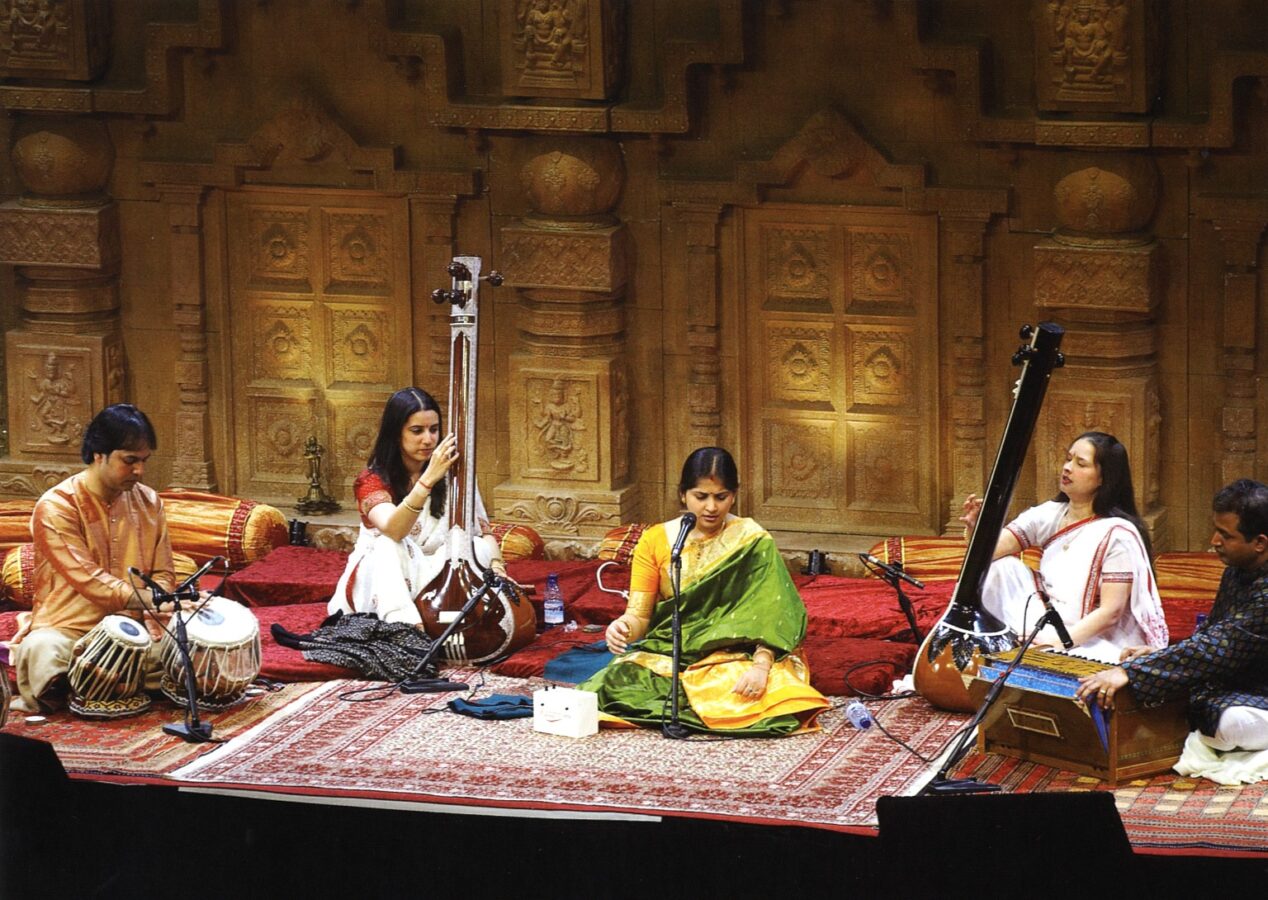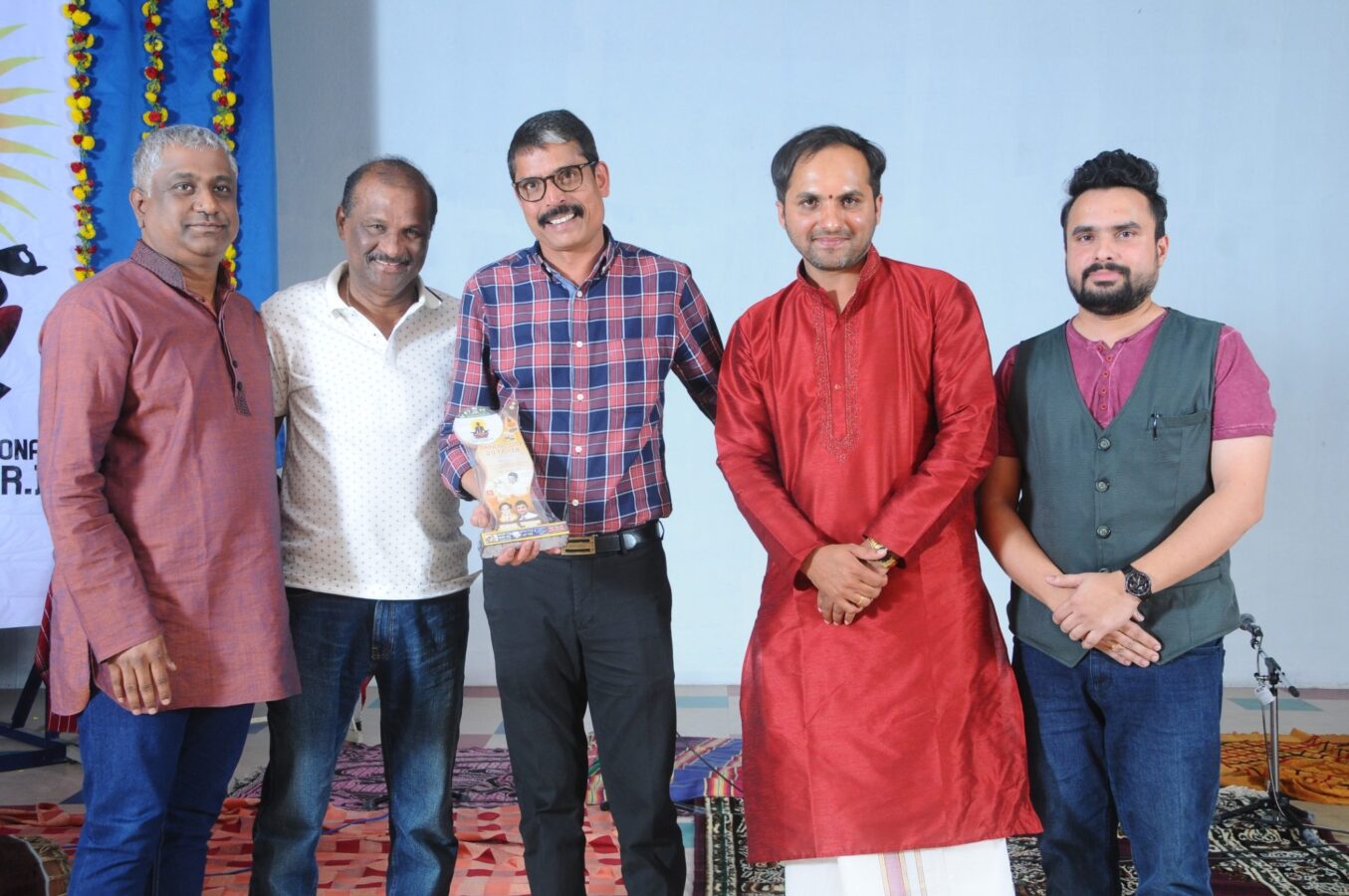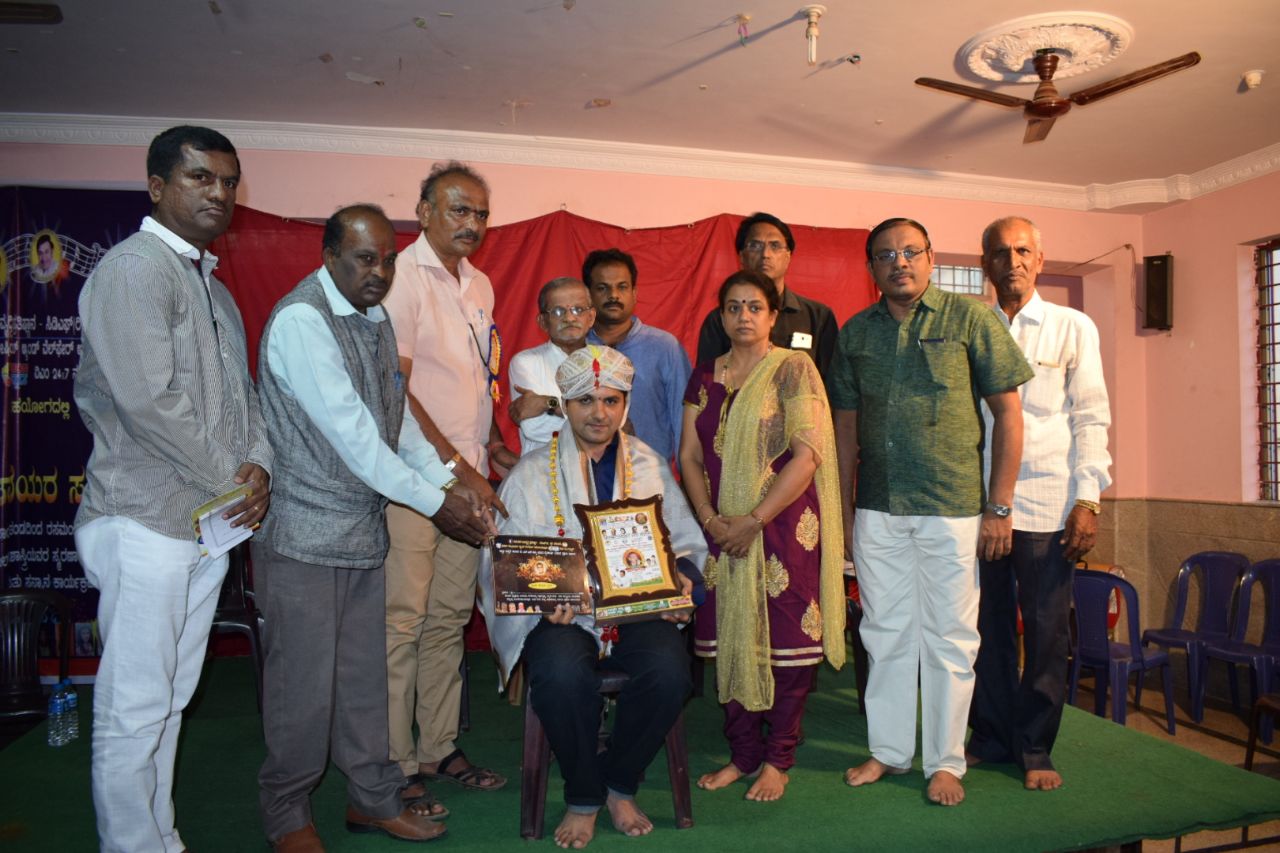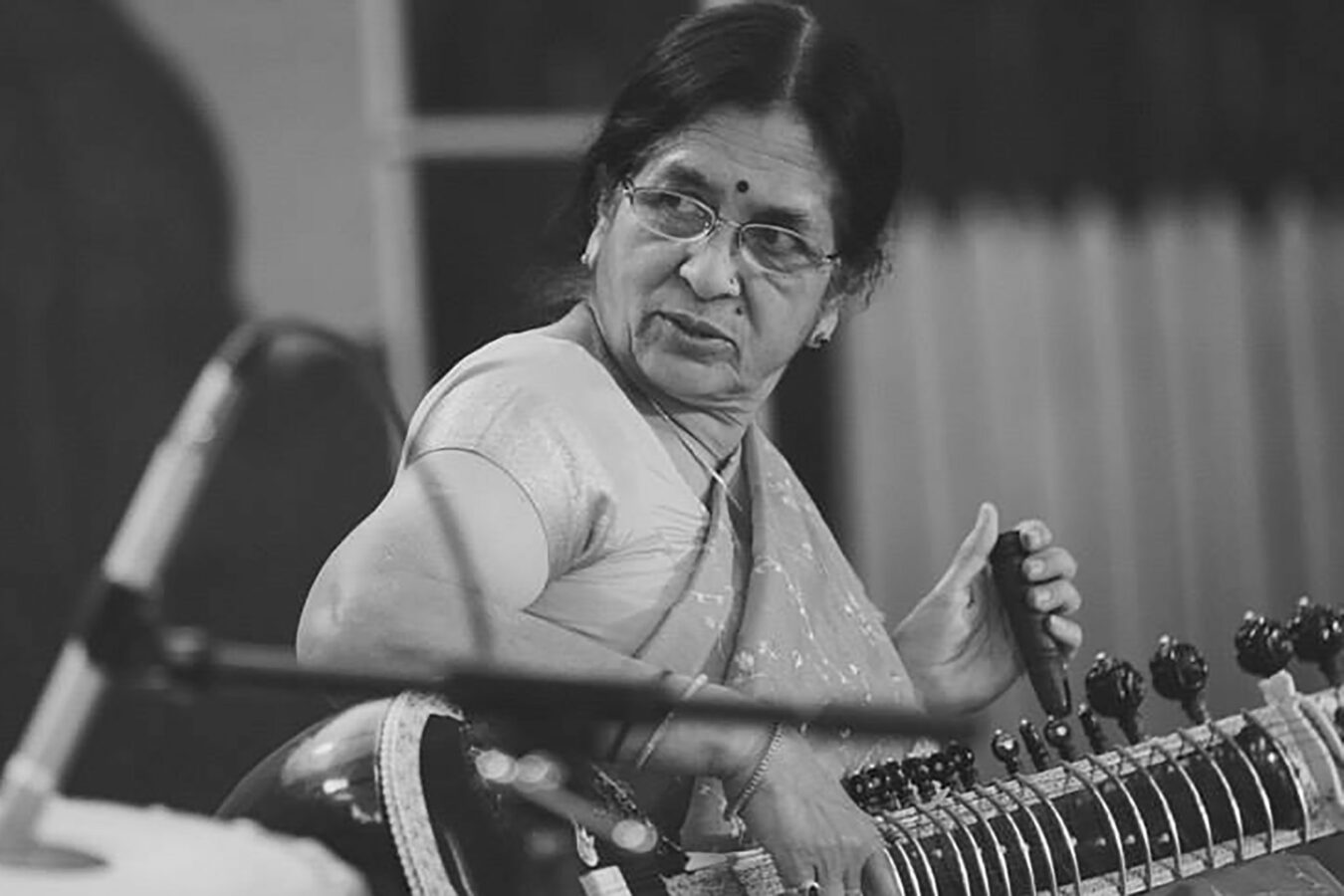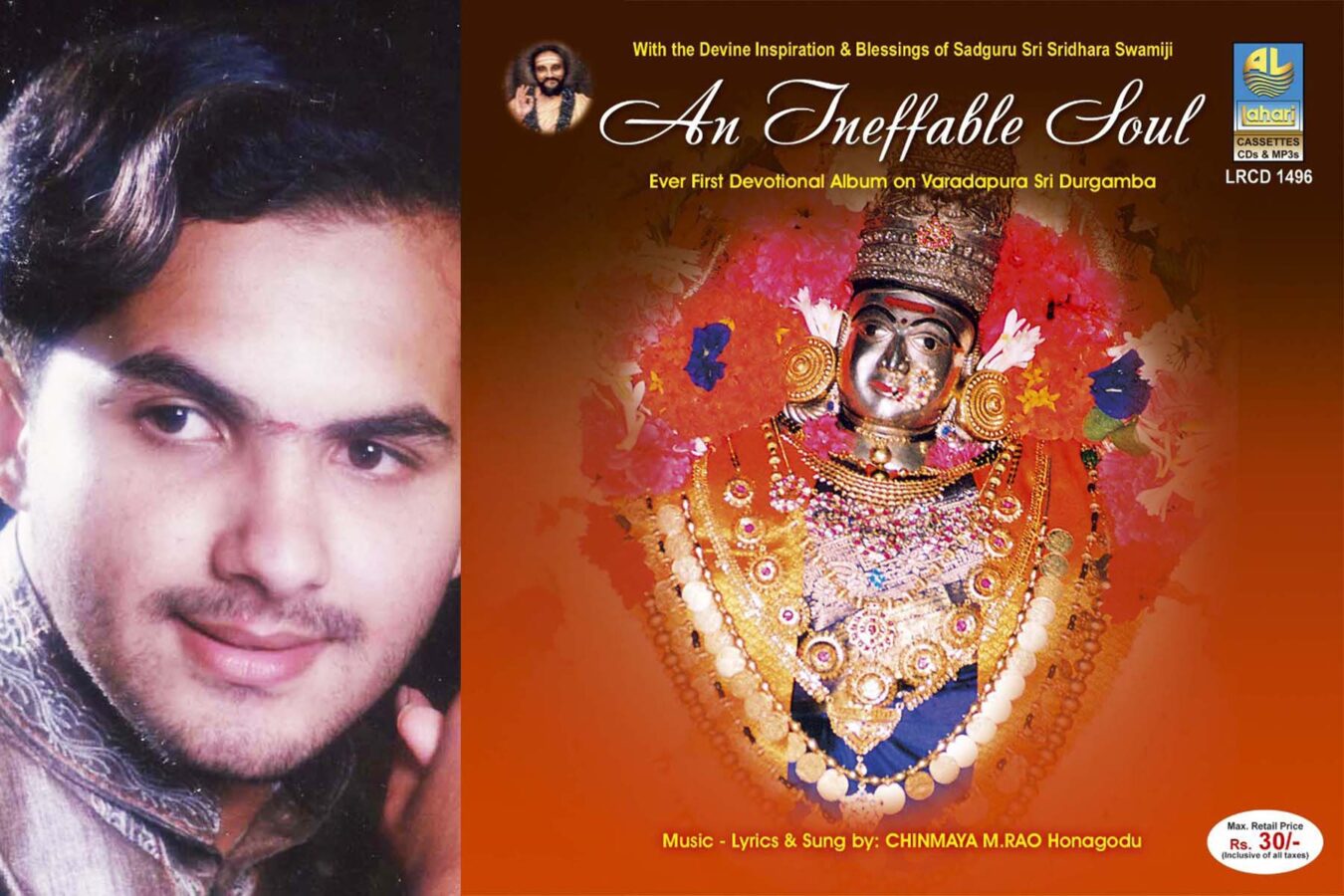One distinguishing characteristic of Indian Music is the relationship of each swara(note) with the Shadja(tonic) which determines the placing of the swaras and the expression of each swara in the saptak(scale). Hence the constant playing of the drone is necessary. A singer is always accompanied by an instrument called “Tanpura” which is tuned to suit his key note. It should be suitable for his voice, to suit one and a half octave above the tonic and one octave below. This range of his voice should be used effortlessly.
In sketching the outline of the raga, he improvises on the ascending and descending notes, observed the prescribed relation of “King” and “Queen” and the important group of notes which characterises the particular raga. After the Alap, he starts the actual raga, accompanied by the Tabla. 2. The Antara or the second half of the song, going upto the higher Sa and returning back. 3. Sancharee or using both halves of the song and complete octave with the ascent and descent. 4. Aabhog or the mixture of the above three, covering the three octaves.
In singing, the musician improvises the song with alap, or an improvisation of notes is slow tempo. The alap proceeds leisurely, without being particular about the time measure, but laden more with the emotional content of the raga. Then he starts the “boltaan”, an improvisation of notes in medium or fast tempo, with the wordings of the song with particular emphasis on rythmic variations as the aim. The third is “sargam”, the improvisation of notes with short names, and these are produced in various rythmic patterns with suitable combination. The last is “taans”, an improvisation of notes taken in slow, medium and fast tempo.
The main characterstic of classical music is the scope of systematic improvisation in the building up of the raga. An improvisation of the raga means a succession of musical sounds denoting the fertility of genius. A master musician always brings out startling new combinations. Every musician is supposed to improvise, but real improvisation is supposed to weave new patterns into the framework of a raga.
A great stress is laid on voice culture through a regular and systematic training. The following are some important rules for the vocalists to be observed —
· Highly trained and melodious voice, with perfect control.
· A thorough knowledge of most of the ragas, the techniques and all the types of compositions.
· Simple and pleasant expression of the face and hand gestures.
· Thorough knowledge of tala theory and important talas.
· Possession of a perfect tone, perfectly in tune, in relation to the notes used in his singing and a perfect understanding and a practice of the use of shrutis.
In Hindustani, there are 10 main forms of styles of singing and compositions — Dhrupad, Dhamar, Hori, Khayal, Tappa, Chaturang, Ragasagar, Tarana, Sargam and Thumri. The Dhrupad style is supposed to be the oldest. In this style, we find the gravity and stability of notes, improvisations of Alap, peculiar variations of rythmic patterns not found in any other styles. There are four forms of Dhrupad singing — Daagar Bani, Khandaar Bani, Nauhar Bani and Gauhar Bani.
Khayal is an extempore development and improvisation of the typical composition sung in different ragas with alap, boltaan and taans. Khayals are of two varieties — Vilambit(slow tempoed) and Drut(fast tempoed). They are sung in different talas.
Tappa is another style of song composition, which has short and modulated graceful taans: a sort of ornamental chain of small cluster of notes.
Ragasagar consists of different parts of musical passages in different ragas, as one song composition. These compositions have 8 to 12 different ragas and the lyrics indicate the change of the ragas. The peculiarity of this style depends on how smoothly the musical passages change along with the change of ragas.
Tarana is a style consisting of peculiar syllables woven into rythmical patterns as a song, and it is usually sung in faster tempo.
Chaturang denotes four colours or a composition of a song in four parts: Fast Khayal, Tarana, Sargam and a “Paran” of Tabla or Pakhwaj.
Thumri is supposed to be a romantic and erotic style of singing; the song compositions are mostly of love, separation and devotion. They are usually sung in slower tempo, giving more importance to the lyrics with short alaps.
Hori compositions are based mostly on the description of the spring season: of colour throwing, based on the Radha-Krishna episodes. Horis are of two varieties — “Pakki Hori” and “Kacchi Hori”. “Pakki Hori” is very dignified, sung in Dhamar style, while “Kacchi Hori” is sung in Deepchandi Tala, in which fast taans are used.
The laws governing the performance of vocal and instrumental music are much the same. There are 2 modes of training for instrumental, one which is purely instrumental, and the other who first receive training in vocal music.
The Gharana or family is a school of a particular style of singing or playing instruments, or a traditionally characteristic individual style. The birth of Gharanas must have taken place in the 18th century with the idea of preserving the tradition of music and the musical compositions. A Gharana has got a particular discipline, system and style. The character and style of traditionally disciplined music of a gharana remains with one generation only, and in due course one of the brilliant pupils adds his own individual contribution and creates a new style of singing.
In the case of the instrumentalists, we may divide Gharana into 2 categories. The first is the traditional disciplined style giving more stress on the “JHOD-ALAP” and exploring all possibilities in this direction, plus the gat and a perfect layakari. The second gives less importance to the “JHOD-JHALA”, but lays more stress on the gat and the perfect layakari.
TALA — RYTHMICAL GROUPINGS OF BEATS
There is a perfect balance in the universe. This balance is the essence of Tala and therefore Tala is in classical music is an important factor. The Tala is the theory of time measure. It has the same principle in Hindustani and Carnatic music, though the names and styles differ. The musical time is divided into simple and complicated metres. When accompanying the dance, vocal and instrumental music, the Tala maintains the balance which is the most essential function of music. Tala is independent of the music it accompanies: it has its own divisions. It moves in bars, and each beat in it is divided into the smallest fraction.
Rythm has three aspects: Tala, Laya and Matra. Tala is a complete cycle of Metrical phrasecomposed of a fixed number of beats. There are over a 100 Talas, but only 30 Talas are known and only about 10-12 are used.
The Laya is the tempo, which keeps uniformity of time span and it has 3 divisions — Vilambit, Madhya and Drut.
The Matra is the smallest unit of the tala.
Tala is the most important aspect of classical music, and it can be considered to be the very basis or pulse of music. To appreciate the structure of simple and complicated divisions, the improvisations of Tala and its theory, one should listen to an accomplished solo drummer. A classical drum player requires at 8-10 years of methodical training and another 4-5 years of hard practice.



